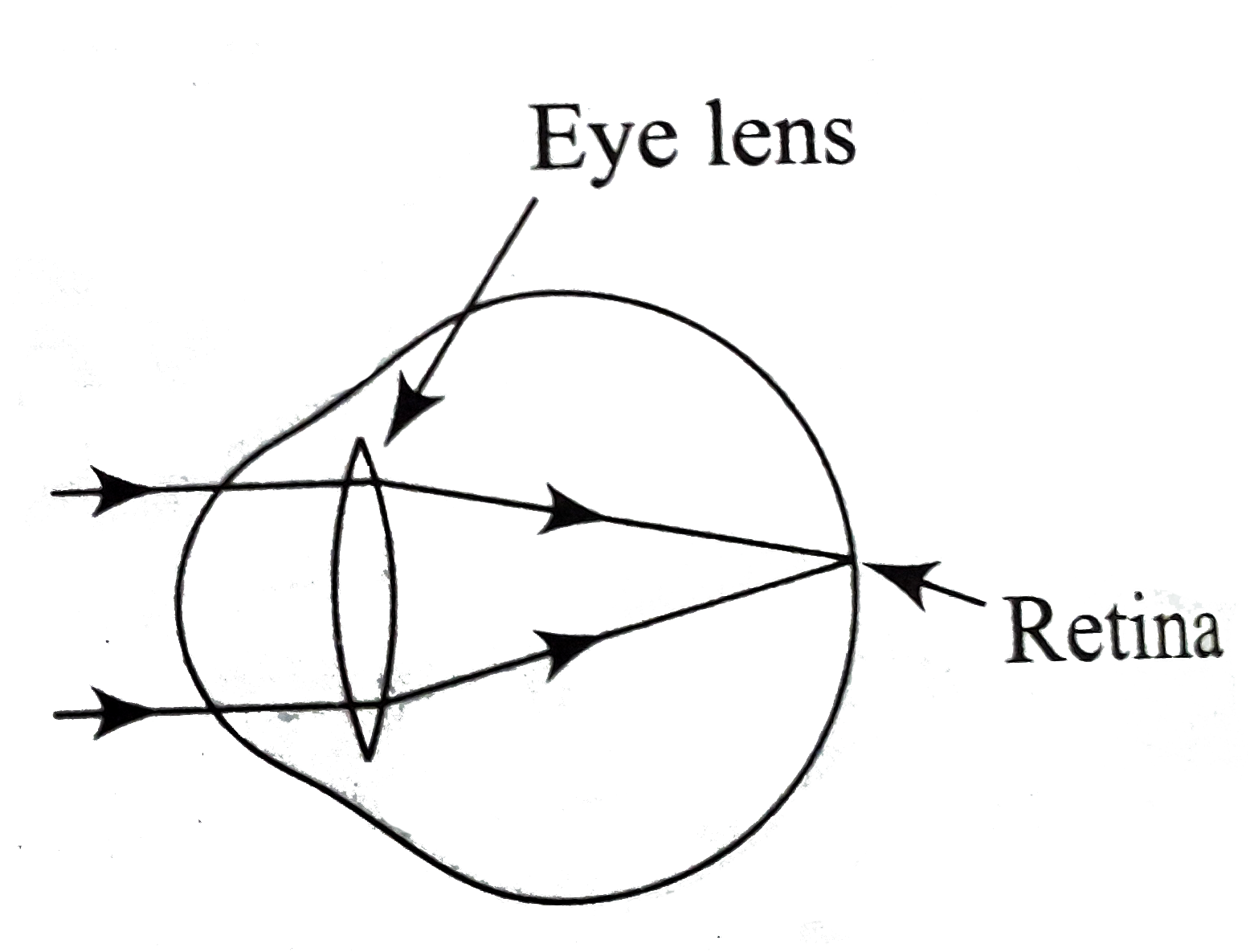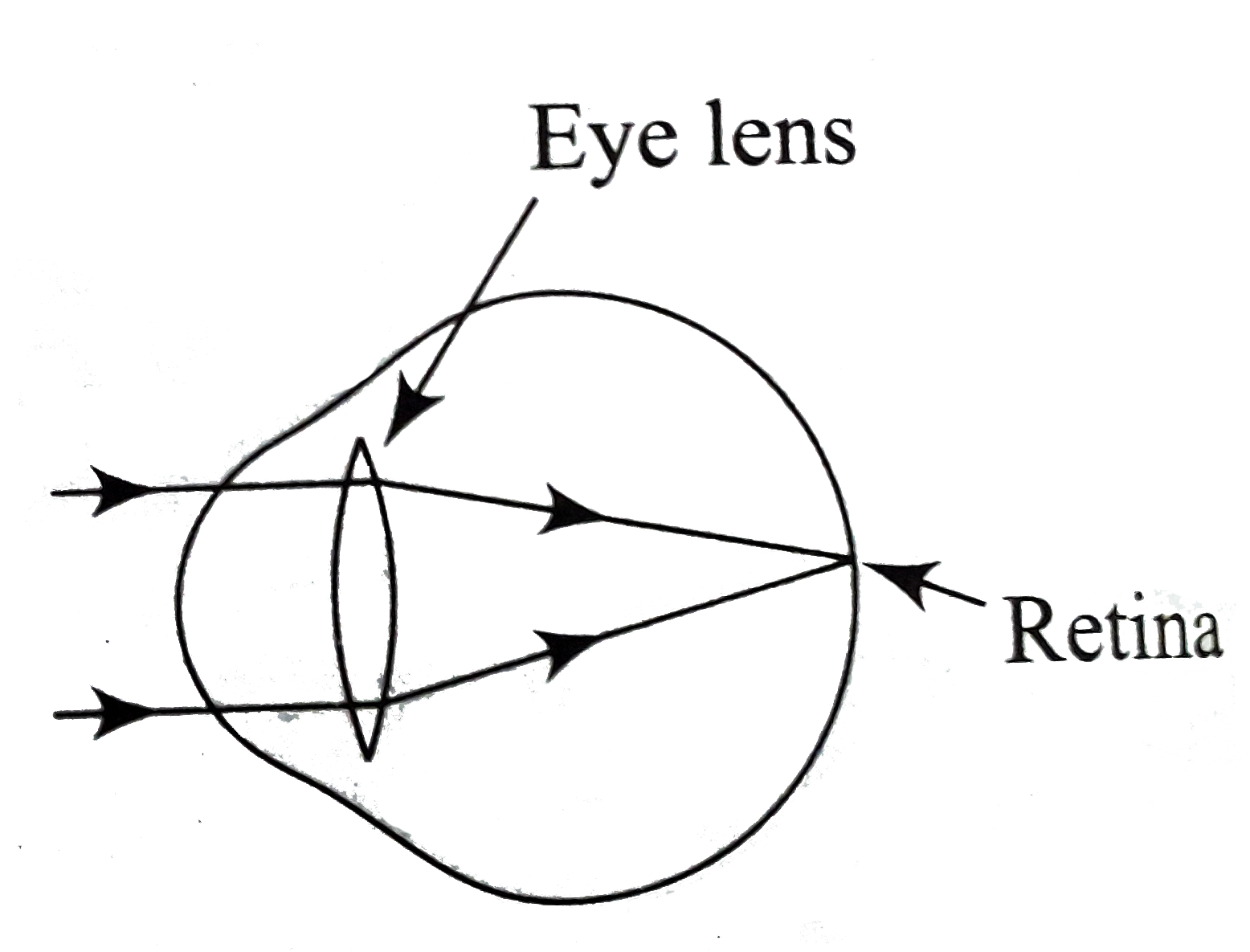Contraction of ciliary muscles ___________the curvature of lens while their relaxation _____________the curvature
The correct Answer is:increases ; decreases
To answer the question regarding the effect of ciliary muscles on the curvature of the lens, we can break it down into the following steps:
1. Understanding Ciliary Muscles: Ciliary muscles are a ring of smooth muscles located around the lens of the eye. They play a crucial role in adjusting the shape of the lens for focusing.
2. Effect of Contraction: When the ciliary muscles contract, they pull the edges of the lens, allowing it to become thicker. A thicker lens has a greater curvature, which increases its refractive power. This is essential for focusing on nearby objects.
3. Effect of Relaxation: Conversely, when the ciliary muscles relax, the tension on the lens decreases. This allows the lens to become thinner, resulting in a decrease in curvature. A thinner lens has a longer focal length, which is better for focusing on distant objects.
4. Focal Length Relationship: The curvature of the lens is inversely related to its focal length. Thus, an increase in curvature (due to contraction) results in a shorter focal length, while a decrease in curvature (due to relaxation) results in a longer focal length.
5. Final Statement: Based on the above understanding, we can conclude that:
- Contraction of ciliary muscles increases the curvature of the lens.
- Relaxation of ciliary muscles decreases the curvature of the lens.
Complete Answer:
Contraction of ciliary muscles increases the curvature of the lens while their relaxation decreases the curvature.
- Contraction of ciliary muscles increases the curvature of the lens.
- Relaxation of ciliary muscles decreases the curvature of the lens.
Contraction of ciliary muscles increases the curvature of the lens while their relaxation decreases the curvature.
Topper's Solved these Questions
- NEURAL CONTROL AND COORDINATIONBOOK - ICSECHAPTER - NEURAL CONTROL AND COORDINATIONEXERCISE - (Review question) Matching
1 Videos
- NEURAL CONTROL AND COORDINATIONBOOK - ICSECHAPTER - NEURAL CONTROL AND COORDINATIONEXERCISE - (Review question) True of false
5 Videos
- NEURAL CONTROL AND COORDINATIONBOOK - ICSECHAPTER - NEURAL CONTROL AND COORDINATIONEXERCISE - (Review question) long answer
20 Videos
- NEURAL CONTROL AND CO-ORDINATION BOOK - ICSECHAPTER - NEURAL CONTROL AND CO-ORDINATION EXERCISE - NCERT EXERCISES WITH ANSWER (DIFFERENTIATE BETWEEN)
11 Videos
- PHOTOMORPHOGENESIS IN PLANTSBOOK - ICSECHAPTER - PHOTOMORPHOGENESIS IN PLANTSEXERCISE - REVIEW QUESTIONS (LONG ANSWER TYPE QUESTIONS)
6 Videos
Similar Questions
Sympathetic nerve fibres ___________the heart rate while parasympathetic nerve fibres _____________the heart rate.
View SolutionDiaphragm contracts to help in _____________ while the contraction of abdominal muscles helps in _____________.
View SolutionIf the circular ciliary muscles of the eye are unable to contract, the
View SolutionContraction of diaphragm increases the volume of the thoracic chamber in the ....(A).... axis while the contraction of external intercostal muscles increases the volume of the thoracic chamber in the ..... (B).... axis.
View SolutionIris, ciliary muscles, suspensory ligaments and elasticity of lens.
View SolutionContraction of a ........ muscle draws a limb towards the body midline while contraction of a .......... muscle draws a limb away from the body midline.
View SolutionA plano-convex lens P and a concavo-convex lens Q are in contact as shown in figure. The refractive index o fthe material of the lens P and Q is 1.8and1.2 respectively. The radius of curvature of the concave surface of the lens Q is double the radius of curvature of the convex surface. The convex surface of Q is silvered.The focal lengthof combination is 8cm. The radius of curvature of common surface is
View SolutionThe ciliary muscles of eye control the curvature of the lens in the eye and hence can alter the effective focal length of the system. When the muscles are fully relaxed, the focal length is maximum. When the muscles are strained, the curvature of lens increases. That means radius of curvature decreases and focal length decreases. For a clear vision, the image must be on the retina. The image distance is therefore fixed for clear vision and it equals the distance of retina from eye lens. It is about 2.5cm for a grown up person.
A perosn can theoretically have clear vision of an object situated at any large distance from the eye. The smallest distance at which a person can clearly see is related to minimum possible focal length. The ciliary muscles are most strained in this position. For an average grown up person, minimum distance of the object should be around 25cm.
A person suffering from eye defects uses spectacles (eye glass). The function of lens of spectacles is to form the image of the objects within the range in which the person can see clearly. The image o the spectacle lens becomes object for the eye lens and whose image is formed on the retina.
The number of spectacle lens used for th eremedy of eye defect is decided by the power fo the lens required and the number of spectacle lens is equal to the numerical value of the power of lens with sign. For example, if power of the lens required is +3D (converging lens of focal length 100/3cm ), then number of lens will be +3.
For all the calculations required, you can use the lens formula and lensmaker's formula. Assume that the eye lens is equiconvex lens. Neglect the distance between the eye lens and the spectacle lens.

Q. Minimum focal length of eye lens of a normal peson is
View SolutionThe ciliary muscles of eye control the curvature of the lens in the eye and hence can alter the effective focal length of the system. When the muscles are fully relaxed, the focal length is maximum. When the muscles are strained, the curvature of lens increases. That means radius of curvature decreases and focal length decreases. For a clear vision, the image must be on the retina. The image distance is therefore fixed for clear vision and it equals the distance of retina from eye lens. It is about 2.5cm for a grown up person.
A perosn can theoretically have clear vision of an object situated at any large distance from the eye. The smallest distance at which a person can clearly see is related to minimum possible focal length. The ciliary muscles are most strained in this position. For an average grown up person, minimum distance of the object should be around 25cm.
A person suffering from eye defects uses spectacles (eye glass). The function of lens of spectacles is to form the image of the objects within the range in which the person can see clearly. The image o the spectacle lens becomes object for the eye lens and whose image is formed on the retina.
The number of spectacle lens used for th eremedy of eye defect is decided by the power fo the lens required and the number of spectacle lens is equal to the numerical value of the power of lens with sign. For example, if power of the lens required is +3D (converging lens of focal length 100/3cm ), then number of lens will be +3.
For all the calculations required, you can use the lens formula and lensmaker's formula. Assume that the eye lens is equiconvex lens. Neglect the distance between the eye lens and the spectacle lens.

Q. Maximum focal length of a eye lens of a normal person is
View SolutionDefine the term power of accommodtion. Write the modification in the curvature of the
eye lens which enables us to see the nearby objects clearly.
View Solution
